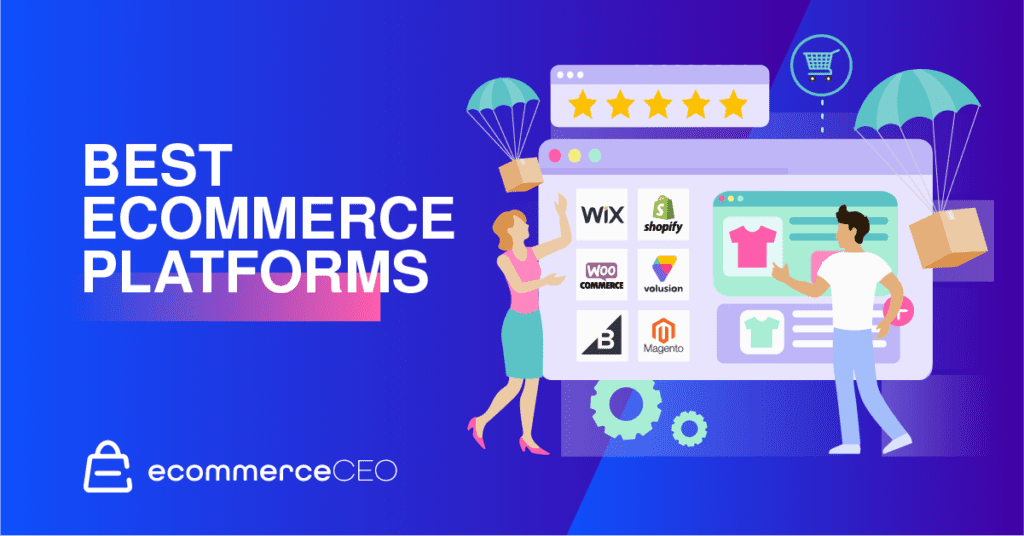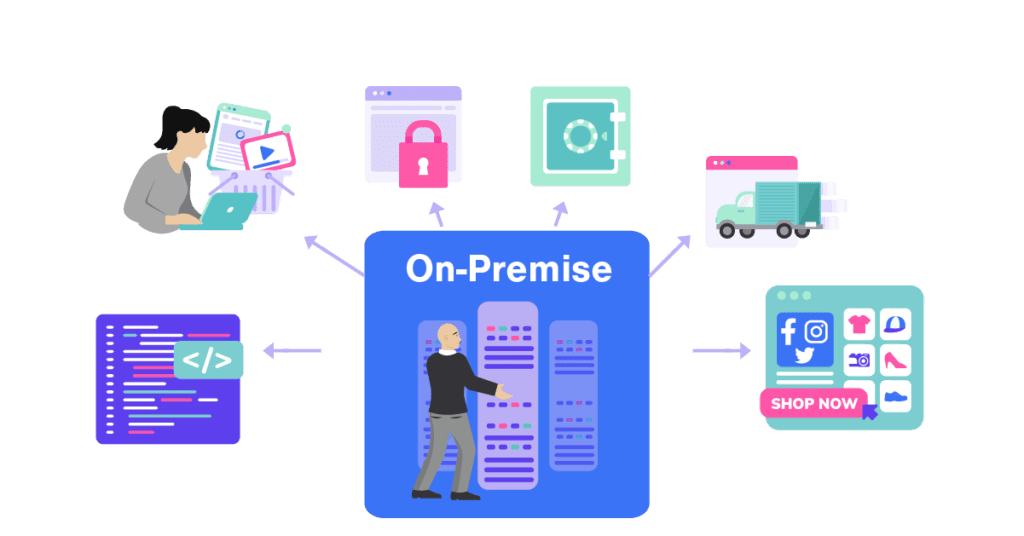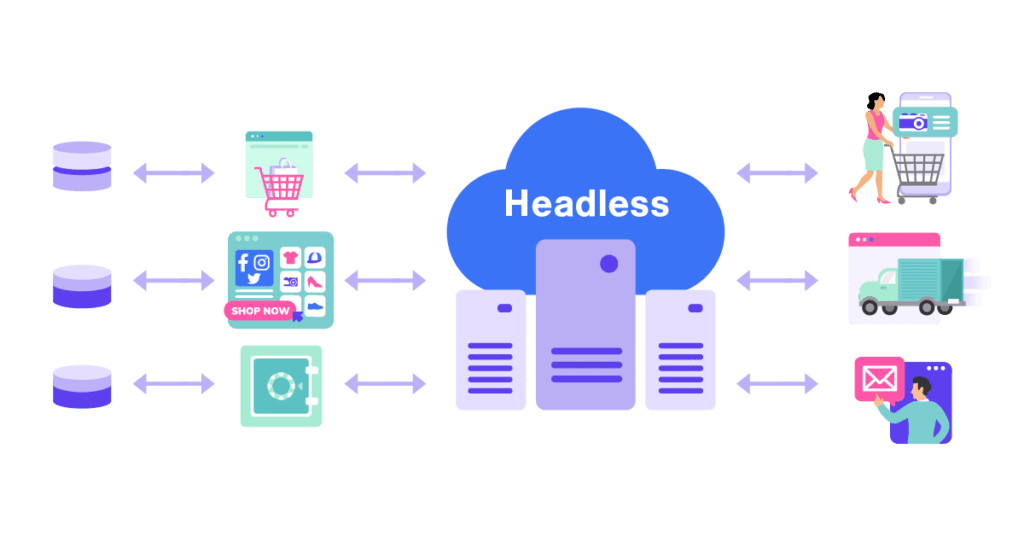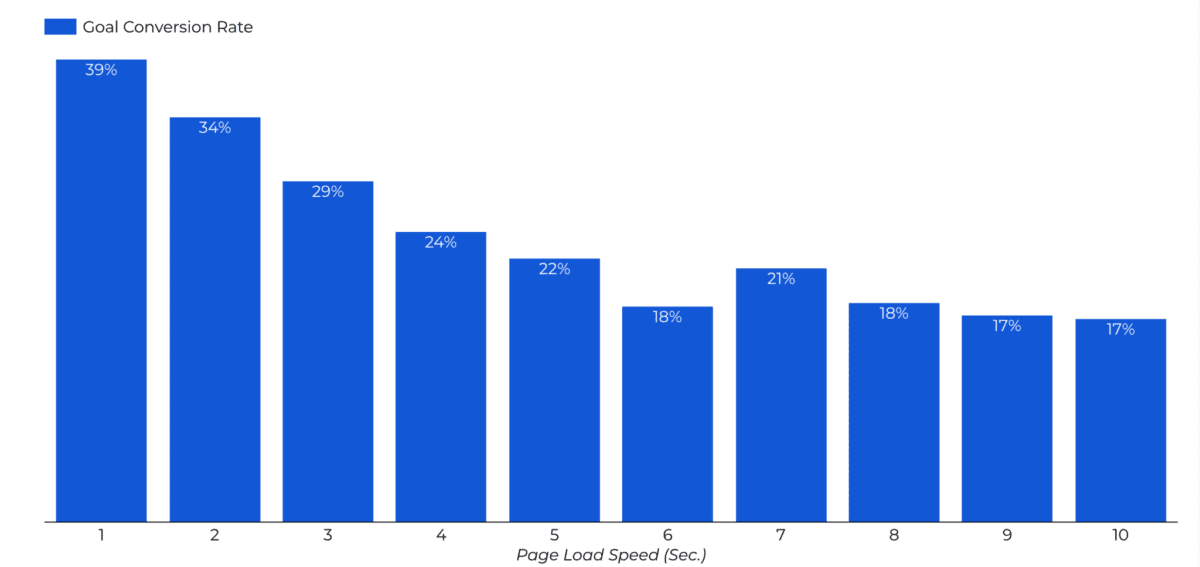Our top ecommerce platforms are based on objective performance data, feature set and, value. Compare the best ecommerce website builders to find one that fits your needs. If you want to sell products online, you’ll find the right platform on this page.
Top Ecommerce Platforms
- Shopify: Best for Startups, Multi-channel sales and Print On Demand
- BigCommerce: Best Platform for Larger Stores, Enterprise
- WooCommerce: Best For Content Driven Brands, SEO
- Wix: Best Value For Smaller Stores
When you look at ecommerce software, it can be really hard to tell how seemingly minor differences in features and performance can have a major impact on your bottom line, but they can.
All vendors say they’re faster, more reliable, better geared for search engine optimization, PCI ready for credit cards, etc., than the competition. But what’s the reality?
The last thing I want is for you to customize your ecommerce site and load up your products only to have it running super slow. Or find out you need to spend an additional $399 a month to sync your inventory to Amazon and dropship products.

We decided to compare the features, performance, ease of use, design & themes, and integrations of the top ecommerce platforms using real site data. You’ll learn which platform meets your needs, performs the best, and gives you value to dominate your niche.
From cool marketing features to drool-worthy SEO, multichannel functionality, and more. Compare these best ecommerce platforms.
Additional Comparisons
- Shopify vs Wix
- WooCommerce vs Shopify
- BigCommerce vs Shopify
- Volusion vs Shopify
- Squarespace vs Shopify
- Magento (Now Adobe Commerce) vs Shopify
- Squarespace vs Wix
1. Shopify
2. BigCommerce
3. Wix
4. ShopWired
5. Shift4Shop
6. WooCommerce (WordPress Plugin)
7. Volusion
8. Sellfy
9. Squarespace
10. Magento (Now Adobe Commerce)
Key Considerations
Small businesses don’t need all the big features that suck out money from their bank. Asides the cost, the pricing structure of the platform is important – be it month to month or yearly payments and other fees.
Our testing checked the functionalities that startups need. That includes pricing, marketing features, apps, integrations, performance and these other key considerations:
Complexity and Ease Of Use
First-time ecommerce entrepreneurs should be able to launch and run a store on their own without having to call a developer for every last thing. So we gave extra weight for the ability to set up and run your store code free.
| Platform | Ease of Use | Phone Support | 24/7 Support | Chat Support | Community Rating | # of Apps/ Plugins |
|---|---|---|---|---|---|---|
| Shopify | 4.9 | Yes | Yes | Yes | 5 | 5,000 |
| Sellfy | 3.5 | No | Yes | No | 4 | 4 |
| Zyro | 3.7 | No | Yes | Yes | 4.7 | 30 |
| Nexcess StoreBuilder | 4.5 | Yes | Yes | Yes | 3.6 | 50,000+ |
| ShopWired | 4.5 | No | No | Yes | 4.9 | 72 |
| Pixpa | 3.7 | Yes | No | Yes | 4.7 | 103 |
| Freewebstore | 3.4 | No | No | Yes | None | 25+ |
| Ecwid | 3.6 | 5.0 | 1.0 | 5.0 | 4.7 | 100+ |
| Square Online | 4.0 | 5.0 | 1.0 | 5.0 | 4.2 | 25+ |
| BigCommerce | 4.8 | Yes | Yes | Yes | 4.0 | 1000 |
| Woocommerce | 3.3 | No | No | Yes | 4.0 | 250+ |
| Shift4Shop | 4.3 | Yes | Yes | Yes | 3.0 | ~250 |
| Volusion | 4.1 | Yes | Yes | Yes | 2 | ~20 |
| Adobe Commerce | 2.2 | No | No | No | 4 | 3000+ |
| Prestashop | 2.9 | Yes | No | No | 3 | 3000+ |
| SquareSpace | 3.8 | No | Yes | Yes | 3.0 | 10+ |
| Wix | 4.2 | Yes | Yes | No | 4.5 | 700 |
| Weebly | 3.6 | Yes | No | Yes | 2 | ~350 |
From our analysis, BigCommerce and Shopify are at par in ease of use scores. You don’t need to be the master of web dev before you can use them and there’s a ton of support. 3dcart and Wix come close.
But Wix is not the best option for ecommerce and WooCommerce kills all-in-one for beginners/startups especially for optimizing costs and growing SEO.
Drag-and-drop website builders, huh? Well, they’re the digital playground where you, yes you, can create a stunning site from scratch. No coding? No problem! Simply drag your preferred elements, drop ’em where you want, and watch your website come to life. A toolbox for creativity with absolute control. It’s that easy.
Payment Gateways
The payment gateway is the bridge between your ecommerce platform and payment processor. It’s important to have a platform that integrates with popular payment processors like PayPal, Stripe and Square. It starts to get complex when you have to deal with multiple countries or when your bank only integrates with certain payment processors.
WooCommerce easily takes first prize as it supports over 100 Payment Gateways . Shopify follows suit with 100+ options available to use including Amazon Payments, Apple Pay & Google Pay out of the box.
What does this mean? You’re less likely to run into problems when using any of these.
Customer Service
Customer support should be available when you need it, not just during business hours. You want to know that if something goes wrong with your store or payment gateway in the middle of the night, someone will be there to help you fix it. Shopify had the best customer service of all the platforms we tested. We got a response to our email within an hour, and their phone support was even faster.
For some people, they need to be able to get on a phone for support. Only the best ones offer phone support.
Apps And Plugins
If you need a specific app to run your business, you need to make sure it integrates with your ecommerce platform. The best platforms have app stores with hundreds of options to choose from. Shopify leads the pack in number of apps available.
BigCommerce falls short here with only a fraction of the app store offerings as its competitors. If you need an app that isn’t already built for Bigcommerce, you’re out of luck or will have to hire someone to build it for you.
Website Hosting
If you run a large ecommerce business, you might want complete control and server autonomy. In that case, you’re looking at buying a dedicated server or VPS from a web hosting company and set up your platform in there. As such, SAAS like Shopify will not satisfy you.
On Premise

On-premise hosting refers to the practice of a company storing all of its website’s hardware and software at its physical headquarters, which is usually somewhere nearby. The company must buy and operate all of the servers, firewall, operating systems, software licenses, and other equipment as a result of this strategy. Backups and upgrades must be kept current. On-premise isn’t a good option for you if your organization doesn’t have an IT department or the funds to hire one.
Headless Ecommerce

The front and back ends of an ecommerce application are separated by headless ecommerce. This method provides marketers greater control over the customer experience.

Building whatever you want is now more possible. APIs, engagement tools, experience managers, and an IT team are all required for headless commerce. As a result, smaller firms often choose alternate solutions.
SaaS Ecommerce

SaaS, or software as a service, is a popular business model. Not just for ecommerce platforms, SaaS enables businesses to get access to all the software they need without having to be tied to the machine they’re using. SaaS solutions are accessible from any device where there’s an internet connection.
When it comes to SaaS ecommerce, many popular platforms are available including Shopify, BigCommerce, and Wix. These solutions take care of everything for the customer. There’s no need to worry about web hosting, software licenses, domain name, SSL certificate, etc. In exchange for a monthly or annual fee, the service provider handles all of the technical stuff. It’s an affordable way for small businesses that do not have an IT team to handle ecommerce.
However, if you’d rather set it up and not bother yourself with web hosting technicalities, then a platform like BigCommerce could be it.
Shopping Cart vs Platform
A shopping cart is software that allows customers to add items to a virtual “cart” and then checkout. This software can be used on its own or as part of a larger ecommerce platform.
If you plan on selling digital products you probably don’t need a full fledged ecommerce platform. A digital product could be something like an ebook, online course, audio file, video file, or software application. Once the customer pays for the product they’re given access to it immediately via download or email. There’s no need for shipping since there’s nothing physical to ship.
So if you plan on selling digital products then an ecommerce platform cart isn’t necessary. If you have physical products, numerous SKUs, categories – then you need a full ecommerce solution.
Website Platform Performance
In our testing, we based the best ecommerce platforms for SEO on page load time, mobile and desktop speed, SEO, and average organic traffic of top online stores using each platform.
| Platform | Performance | Load Time | Mobile Speed | Desktop Speed | Avg SEO Traffic |
|---|---|---|---|---|---|
| Shopify | 3.9 | 1.3 | 63 | 75 | 11717 |
| Sellfy | 3.1 | 1.4 | 46.8 | 72 | 134 |
| Zyro | 3.3 | 2.1 | 51 | 89 | 128 |
| Nexcess StoreBuilder | 4.0 | 1.93 | 53 | 72 | 58,645 |
| ShopWired | 4.3 | 1.38 | 56 | 80 | 717 |
| Pixpa | 2.3 | 1.6 | 22.66 | 65.5 | 72 |
| Freewebstore | 3.5 | 1.89 | 53 | 79 | 927 |
| Ecwid | 3.5 | 5.0 | 50 | 82 | 15,517 |
| Square Online | 2.8 | 2.03 | 1.0 | 3.0 | 65,317 |
| BigCommerce | 4.5 | 2.2 | 63 | 80 | 33626 |
| Woocommerce | 3.1 | 3.4 | 42 | 52 | 72968 |
| Shift4Shop | 3.0 | 2.8 | 50 | 58 | 9703 |
| Volusion | 2.9 | 3.5 | 48 | 56 | 15779 |
| Adobe Commerce | 2.8 | 4.8 | 39 | 43 | 19408 |
| Prestashop | 2.9 | 4.62 | 50 | 52 | 33851 |
| SquareSpace | 3.5 | 3.5 | 42 | 63 | 5678 |
| Wix | 3.9 | 3.2 | 69 | 81 | 543 |
| Weebly | 2.6 | 3 | 49 | 59 | 186 |
Website Security
Security in ecommerce isn’t a game, folks. It’s a necessity. You need a platform offering rock-solid protection against hackers and breaches. Additionally, diverse payment methods? Oh yeah, a must-have. Cards, PayPal, Apple & Google Pay – you need all the options. It’s about keeping transactions smooth and secure for customers.
Inventory Management
If you have orders ranging in hundreds or thousands weekly, you’ll need a platform that gives you enough flexibility to connect software, helps you reduce errors, and seamlessly integrates your warehouse management and other inventory systems. We also considered platforms that enable multiple currency and store, allows integration with Google services, and 3PLs.
While evaluating ecommerce platforms, we looked for features like:
- Order management features- such as processing orders in batch
- Inventory and pricing sync with online marketplaces
- Ability to manage multiple products and locations from a single platform
- Fulfillment center integration
The level of intentory management you need depends on your ecommerce business model.
Dropshipping & Print On Demand
With dropshipping, you never have to order or touch inventory. This makes it a very beginner friendly business model. But you’re not in control of many things; product quality and returns might be a hurdle.
Also, there are technical stones that you need to move to keep your orders leaving as fast as they enter your ecommerce system if you’re going to dominate the supply of that product.

When evaluating, we looked at these features:
- Ability to sync with supplier’s inventory
- Support of many dropshipping plugins
- Automating different suppliers or SKUs for the same product
- Tracking of order both from your and end customer’s side
- Free/paid dropshipping integration
Private Label & Online Retail
For these types of businesses, you need an ecommerce platform that integrates with your supply chain management. With this business model, you’ll end up with a lot of dollars tied up in inventory, and you’ll need to move that inventory around without getting it lost.

When evaluating, we looked at these features:
- Support of Fulfillment by Amazon (FBA)
- Tracking of order both from your and end customer’s side
- Re-order products from your dashboard
- View stock levels on products
- Bulk order CSV template for easy product ordering
Fulfillment Center Integration
For ecommerce business owners, especially those with a large inventory, having an ecommerce platform that integrates with their fulfillment center helps streamline operations. Without it, store owners must manually submit orders for fulfillment, which is time-consuming and leaves room for error.
The good news is most platforms integrate with fulfillment centers. If you run a Shopify Store, you can use the Shopify Fulfillment Network if you meet certain requirements. However, if your offer more than 2,000 SKUs or ship fewer than ten orders a day, you won’t qualify. In that case, you’ll want to find a fulfillment company that doesn’t have monthly order volume requirements.
Many 3PLs offer apps that connect with the most popular platforms like Shopify, BigCommerce, WooCommerce, and Adobe Commerce. If you use a smaller platform like Wix, Weebly, or Zyro, you may run into integration problems. Some fulfillment providers offer custom integrations for an additional one-time fee.
Ecommerce Platform Integrations
Ecommerce Website Design Considerations
Your website should deliver a rich and smooth experience that entice customers to visit your site, make them stay, and convince them to buy. One crucial place that starts is the design. Too often, online stores go all out with complicated designs that do nothing more than slow down the load time and annoys visitors. Every design you choose should be with the aim to hook potential customers.
The same goes for the navigation, and checkout process.
| Platform | Design & Themes | Visual Design | Mobile UX | Cost Of Premium Themes | # of Free Themes |
|---|---|---|---|---|---|
| Shopify | 4.0 | 5.0 | 97 | $140 | 9 |
| Sellfy | 5.0 | 5 | 93 | $0 | 5 |
| Zyro | 5.0 | 5.0 | 92 | $0 | 50+ |
| Nexcess StoreBuilder | 4.3 | 3.0 | 94 | $20-$100 | 4 |
| ShopWired | 4.3 | 5 | 93 | $3495+ | 20 |
| Pixpa | 4.3 | 5 | 94 | 0 | 131 |
| Freewebstore | 4.3 | 5 | 92 | 0 | 100+ |
| Ecwid | 4.3 | 5.0 | 93 | $60 | 1 |
| Square Online | 3.7 | 5.0 | 92 | $0 | 1 |
| BigCommerce | 3.8 | 5.0 | 94 | $150 | 12 |
| Woocommerce | 4.3 | 3.0 | 97 | $39 | 1000+ |
| Shift4Shop | 4.3 | 4.0 | 95 | $200+ | 50+ |
| Volusion | 3.7 | 4 | 92 | $180 | 18 |
| Adobe Commerce | 3.7 | 5.0 | 5 | $300+ | 1 |
| Prestashop | 3.2 | 4 | 94 | $29+ | 0 |
| SquareSpace | 4.3 | 5.0 | 5 | 100.00% | 14 |
| Wix | 4.7 | 5.0 | 92 | 0 | 72 |
| Weebly | 4.3 | 5 | 97 | $45 | 15 |
Customization Features
To get the best, you’ll need to tweak some features in your ecommerce platform. About that, Shopify checkout process is limiting. The changes you can make to the checkout pages are minimal except if you pay for Shopify Plus. Sure, Shopify Plus has its benefits, but if you don’t need most of them, paying at least $2000 every month only for the sake of the checkout page might be total madness.
If you’re thinking WooCommerce, you can customize almost everything due to child themes. This is one place that self-hosted platforms do well.
A bonus tip I’ll leave here is Elementor. The drag and drop builder plugin is very powerful when combined with the BigCommerce or WooCommerce plugin. You can create advanced price tables, price list and products widgets, customize your checkout page, order tracking, and optimize the mobile view of the website without coding. Another plus is that it’s translation ready; your store can read in Spanish to someone in Mexico and French to another in France, taking marketing to another level.
Theme Selection
Your theme is the frontline for any tweaking you will do. If you’re a beginner to coding or your platform doesn’t allow much for developer re-coding, you need to choose a theme that meets your needs and suits your customers. In picking the right theme, look out for the one that’s best for your niche and what other ecommerce sites are picking.
Another thing is cost. While you can get a large number of free WordPress themes, Shopify and BigCommerce are restricted to 9 and 12 respectively. You’ll have to pay for the other great guys that you might prefer. If you’re into spending more for the best, you can reach out to an expert to customize a theme for you or design one from scratch..
Mobile User Experience
About half of the traffic to ecommerce stores come from mobile devices. Mobile ecommerce is growing so fast that you need to not only think about responsive design but also the best possible experience. One way to go about this is the Google Mobile User Experience Score.
Google’s Mobile User Experience score offers an excellent idea of just how much your website will frustrate mobile users…or not. This score tries to mimic how a real user interacts with the page.
According to a post on Moz, five key factors to consider for mobile user experience include:
- Viewport configuration
- Font legibility
- Use of incompatible plugins
- Content to viewport
- Size and proximity of links
All platforms but Wix did well here. This is more of your work though.
Read Sharon’s article to learn more about fixing common mobile UX mistakes.
Other Ecommerce Website Builders to Consider
If you’re not convinced any of the top will work for your business, there are plenty of other options to consider. We’ve included them below for additional research and support.
Weebly

Founded in 2006 and with about 40 million customers, Weebly is a great option for someone looking for a simple store with marketing automation built in. That will cost you $38 per month vs. using Shopify and Active Campaign ($29 + $17). But if you plan to do any type of marketing, you’ll quickly outgrow Weebly. Don’t use Weebly if SEO is important to you.
Until recently, there hasn’t been a solid focus on ecommerce, and as such, you wouldn’t find some of the sophistication that other top platforms have. Nevertheless, it remains an excellent choice for startup entrepreneurs or those who do not wish to hire a developer.
Prestashop
Founded in 2007, Prestashop is an open-source and cloud-hosted ecommerce platform that gives the best overall value.
While the word “free” automatically makes most of us salivate, the other costs you will accrue with the free version might make the PrestaShop Ready look like a better option especially if you don’t have the technical skills.
With the free downloadable version, you’ll have to pay for web hosting services, SSL certificate, and other modules to complete your store. Also, if you don’t have the heavy technical skills in HTML, CSS, and/or PHP, you’ll have to pay a developer. Nevertheless, that open-code allows extensive integration with couriers, payment gateways, accounting, warehouses, ERP, and more.
You have access to the 16 days trial or pay straight away. It comes with the SSL certificate.
There are ten themes (all free) available in the admin. You might need little knowledge of HTML and CSS as the theme customizer doesn’t have a drag and drop functionality.
The dashboard is straightforward and simple. There’s an onboarding video, but it’s not as comprehensive as Shopify. However, you can achieve most needs through modules that you enable with one click. Those allow better SEO working, Ads, Cross-selling, and social analytics.
Pros
- Tons of apps/integrations available
- Strong SEO
- Open source very flexible
- Large and ready-to-help community
Cons
- Slower than the other builders
- Add-ons can add up
- Limited third-party marketing integrations
- Developer skill needed to tweak
- No multichannel functionalities on the hosted version
Ecwid

Ecwid by Lightspeed is a bit different than other platforms like Shopify and BigCommerce. It is an ecommerce widget you can add to any other website. Using the Instant Sites option gives you a full ecommerce site. Pricing ranges from $19/month for the Venture Plan to $99/month for the Unlimited Plan. With an annual plan discount, that brings pricing down to $14.08 to $82.50 a month.
Pros
- Free forever plan
- Add ecommerce features to any website
- Lots of apps and integrations
Cons
- Product limits
- Phone support limited to the top plan
- Product variants only on top plans
Square Online

The payment processor Square offers a storefront functionality for free. With it, you can get things up and running fairly quickly, but you cannot use a custom domain. If you want more options and features, you can upgrade to a paid plan. The Plus plan is $29/month and includes features like abandoned cart email, personalized products, and ratings and reviews. The Premium Plan is $79/month and includes all that plus real-time shipping rates.
These plans do not allow for month-to-month billing, but do come with a 30-day free trial. All plans charge transaction fees, which can add up for high-volume online retailers.
Pros
- Free forever plan
- Easy to use
- Works for brick-and-mortar businesses too
Cons
- Limited customer support availability
- Transaction fees can be costly for high-volume merchants
- Limited customization choices
- No month-to-month billing
Frequently Asked Questions
Recommendations For 2024
There’s no perfect ecommerce platform, but I’ve narrowed down the top choices.
Choosing the best ecommerce site builder is really based on your needs. We do want to recommend that you consider a few as front-runners – BigCommerce was by far the best overall platform for any business model and performs excellently for SEO.
WooCommerce is catching up with market leaders like Shopify in terms of features and apps. Perfect for private/white label ecommerce sites. Awesome for affiliate marketing. And the strongest option if you want to run a private label & affiliate marketing combo site.
Shopify is the best platform for dropshipping, including print on demand.
Wix works for simple stores. If I were running a local bakery that takes few online orders, I’d choose Wix over Squarespace or Weebly. Wix has come a long way in a few years and it’s perfectly priced for soloprenuers or small stores.
If you’re considering Adobe Commerce, X-Cart is worth a look. It’s one of the best free ecommerce platforms if you have dev resources. Plus it has made a lot of investment in expanding the product and brand in recent years.
Most ecommerce platforms do a decent job. There is a handful we’d warn you to think twice before committing to, including Open Cart, Jigoshop, ePages (1&1), CoreCommerce, and Big Cartel. There are much better options available at similar price points. Still, many people use and love these platforms.
Not sure what the best ecommerce platform is for you?






















